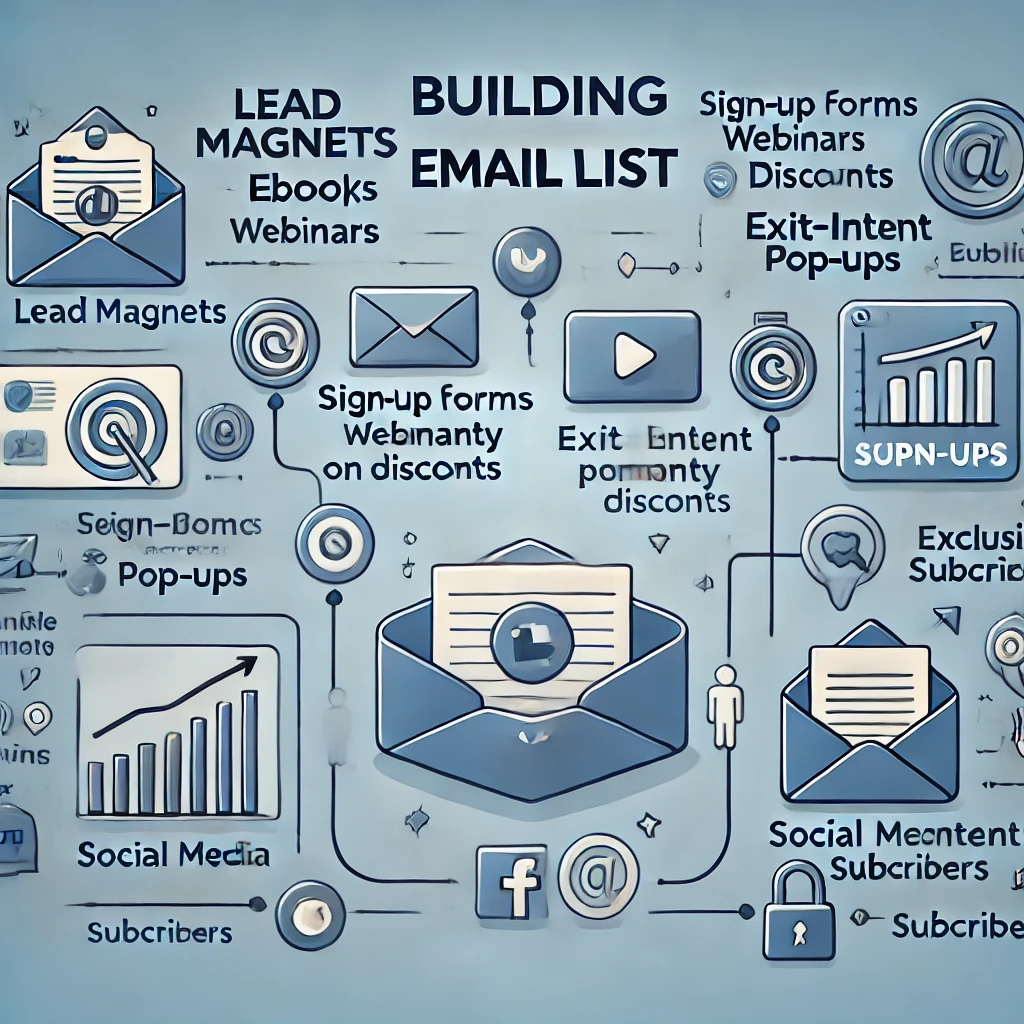These are the most important, non-negotiable marketing strategies you need to use on your website when looking for customers.
Imagine launching your dream business only to see it flounder due to lack of visibility. Sarah, an enthusiastic entrepreneur, launched her handmade jewelry business online, only to face dwindling sales within months. What went wrong?
Sarah launched her business, but due to poor online marketing strategy, found few customers.
Sarah missed some key online marketing strategies that are non-negotiable for any business aiming to thrive in the digital world. In this guide, we’ll explore the essential elements of online marketing that every entrepreneur must embrace to ensure their business stands out and succeeds.
1. Clear, Clean, Professional Looking Website
Your website is the first impression potential customers have of your business. It needs to be professional, aesthetically pleasing, and functional. Learn more about how to make sure your website is well organized, aligned, and professional looking on this post “Web design basics for beginners“.

Here are the key elements to focus on:
Key Elements of a Professional Website
- Minimalist Website Design: Use no more than three colors (white, gray and black are also allowed and encouraged, on top of your main colors) and three fonts to keep the design clean and uncluttered. This simplicity helps visitors focus on your content without distraction.
- Hero Title in H1 Tags: Ensure the main title is in H1 tags and the subtitle in H2 tags, both visible above the scroll line. This helps with SEO and makes your message immediately clear.
- Ample Side Gutter Space, and ‘Breathing Room’ around elements: Maintain clear margins and an alignment grid for all elements on the page. This ensures your content is easy to read and visually appealing.
- Calls to Action: Include clear calls to action (CTAs) and a phone number. CTAs should be strategically placed to guide users toward desired actions, such as making a purchase or signing up for a email newsletter.
- Phone number: Encourage your users to call or text you with an easy to see phone number.
- Offer a Free Consultation: Make sure your users know they can reach out to you for advice and information and that you will encourage them to do so.
- Essential Pages: Have basic pages like the homepage, products/services, about us, and contact. Each page should serve a specific purpose and provide valuable information.
- Optimized Images: Use images optimized for quick loading to improve page speed. Ensure images are clear, non-blurry, well-lit, and look professional.
- Fast Loading Speed: Ensure your website loads in no more than 2 seconds. Slow loading times can drive visitors away. You can check your website loading speed with Google Page Insights.
- Competitive Quality: Compare your site to your competitors and ensure it meets or exceeds their quality. A superior website design can set you apart in the market.
- Responsive Design: Ensure your site looks good on mobile, tablet, and laptop. A responsive design adapts to different screen sizes, providing a seamless user experience.
- Industry Appropriate Colors: Choose colors that reflect your industry. For example, avoid pastels if you are an adult luxury brand; opt for more sophisticated hues.
- Clear Value Propositions: Start with clear value propositions and lean into them. Explain how your company is different and how that will impact your customer. Give readers as many reasons as possible to see your value.
Investing in professional web development can make a significant difference in user experience. Regularly updating your website with fresh content and maintaining its technical health are crucial for long-term success.

2. Build an Email List to Market To
Building an email list is crucial for direct marketing. It allows you to reach your customers directly with personalized messages, helping to foster a deeper relationship with them.
Strategies for Building an Email List
- Lead Magnets: Offer free resources like eBooks, webinars, or discounts in exchange for email sign-ups. This provides immediate value to potential subscribers.
- Sign-Up Forms: Place sign-up forms prominently on your website, especially on the homepage. The easier it is for users to find and fill out these forms, the more likely they are to subscribe.
- Pop-Ups: Use exit-intent pop-ups to capture visitors before they leave your site. These pop-ups can offer a discount or free resource to encourage sign-ups.
- Social Media Integration: Promote your email sign-up form through your social media channels. Leverage your social media following to grow your email list.
- Exclusive Content: Provide subscribers with exclusive content and early access to new products or services. This makes them feel valued and more likely to stay engaged.

An email list is a valuable asset that allows you to nurture relationships with your audience, provide value, and ultimately drive sales. Regular communication through emails helps keep your brand top-of-mind and encourages repeat business.
Prioritize your website’s user experience to keep visitors engaged and drive conversions.
3. Homepage Must Tell Reader “What’s in it for them”
Your homepage is the gateway to your business, and it must immediately communicate the value you offer to your visitors. Instead of focusing solely on your company, highlight what your visitors will gain from your products or services.
Remember this about marketing:
Your visitors want to know how they will be transformed, or improved from your service/product. That’s the key thing that drives most of us – knowing what we will get out of it.
Key Strategies for an Effective Homepage
- Value Proposition: Clearly state your value proposition at the top of the homepage. Explain how your products or services solve a problem or improve the lives of your customers.
- Benefits Over Features: Focus on the benefits of your offerings rather than just listing features. Tell visitors how your product can make a difference for them.
- Customer-Centric Language: Use language that speaks directly to the customer. Use words like “you” and “your” to create a personal connection.
- Visuals and Headlines: Use compelling visuals and strong headlines to draw attention. Ensure these elements communicate the core benefits quickly and effectively.
By answering the question, “What’s in it for them?” you make it easier for potential customers to see the value in what you offer and feel motivated to take the next step.
4. Social Proof
Social proof is a powerful tool in building trust with your audience. Testimonials, reviews, and endorsements from real customers can significantly influence potential buyers.
Types of Social Proof to Include
- Testimonials: Feature quotes from satisfied customers prominently on your site. Ensure they are specific and highlight the benefits your product or service provided.
- Yelp/Google Reviews: Link to your Yelp and Google reviews or embed these reviews directly on your site. Positive reviews from reputable sources can enhance credibility.
- Case Studies: Provide detailed case studies that show how your product or service solved a problem for a customer. Include measurable results and specific benefits.
- User-Generated Content: Showcase photos, videos, and other content created by your customers using your products. This adds authenticity and relatability.
Incorporating social proof throughout your website can help reassure visitors that others have had positive experiences with your business, increasing their confidence in choosing you.
5. Partner Logos
Displaying logos of reputable partners or clients can help legitimize your business and build trust with potential customers. It shows that established companies trust your products or services.
Effective Use of Partner Logos
- Visible Placement: Place partner logos prominently on your homepage or in a dedicated section titled “Our Partners” or “Trusted By.”
- High-Quality Images: Use high-quality, recognizable logos that are visually appealing and immediately identifiable.
- Contextual Integration: Include brief descriptions or case studies explaining your partnerships and how you have worked together successfully.
- Credibility Boost: Ensure the logos you display are of reputable companies to maximize the credibility boost.
Displaying partner logos can reassure potential customers of your reliability and the quality of your offerings, encouraging them to choose your business over competitors.
6. Zero Typos, Misspellings, Grammar Errors
Attention to detail in your website content is critical. Typos, misspellings, and grammar errors can undermine your credibility and make your business appear unprofessional.
Ensuring Flawless Content
- Proofreading: Thoroughly proofread all website content. Consider having multiple people review the text to catch any errors.
- Professional Editing: Hire a professional editor or use advanced grammar-checking tools like Grammarly to ensure your content is error-free.
- Consistent Style: Maintain a consistent writing style and tone throughout your website to enhance readability and professionalism.
- Regular Updates: Regularly update and review your content to ensure it remains accurate and free from errors over time.
Maintaining high standards for your website content demonstrates professionalism and helps build trust with your audience. Clear, error-free content ensures your message is communicated effectively and enhances your brand’s credibility.